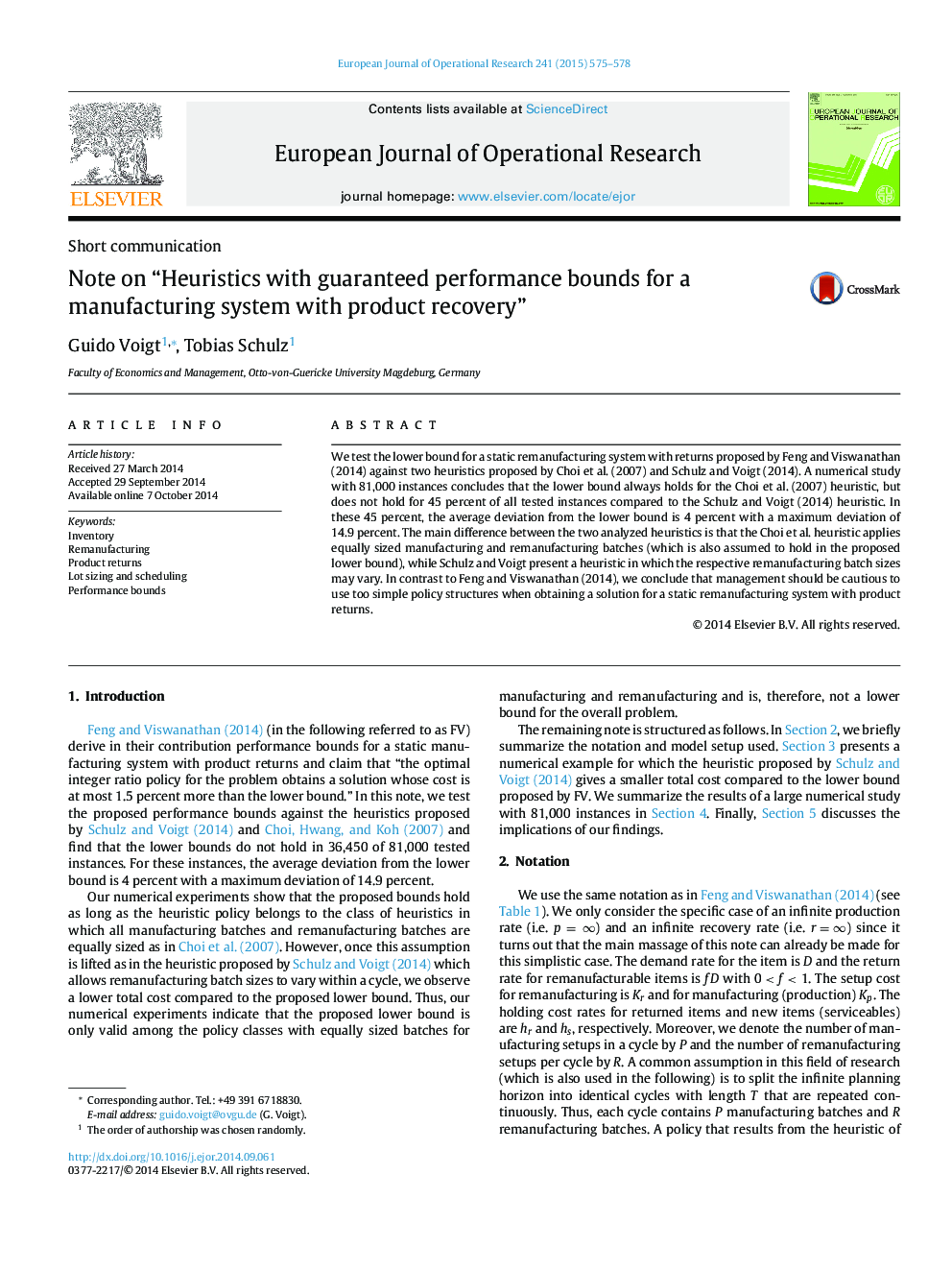| Article ID | Journal | Published Year | Pages | File Type |
|---|---|---|---|---|
| 6896987 | European Journal of Operational Research | 2015 | 4 Pages |
Abstract
We test the lower bound for a static remanufacturing system with returns proposed by Feng and Viswanathan (2014) against two heuristics proposed by Choi et al. (2007) and Schulz and Voigt (2014). A numerical study with 81,000 instances concludes that the lower bound always holds for the Choi et al. (2007) heuristic, but does not hold for 45 percent of all tested instances compared to the Schulz and Voigt (2014) heuristic. In these 45 percent, the average deviation from the lower bound is 4 percent with a maximum deviation of 14.9 percent. The main difference between the two analyzed heuristics is that the Choi et al. heuristic applies equally sized manufacturing and remanufacturing batches (which is also assumed to hold in the proposed lower bound), while Schulz and Voigt present a heuristic in which the respective remanufacturing batch sizes may vary. In contrast to Feng and Viswanathan (2014), we conclude that management should be cautious to use too simple policy structures when obtaining a solution for a static remanufacturing system with product returns.
Related Topics
Physical Sciences and Engineering
Computer Science
Computer Science (General)
Authors
Guido Voigt, Tobias Schulz,
